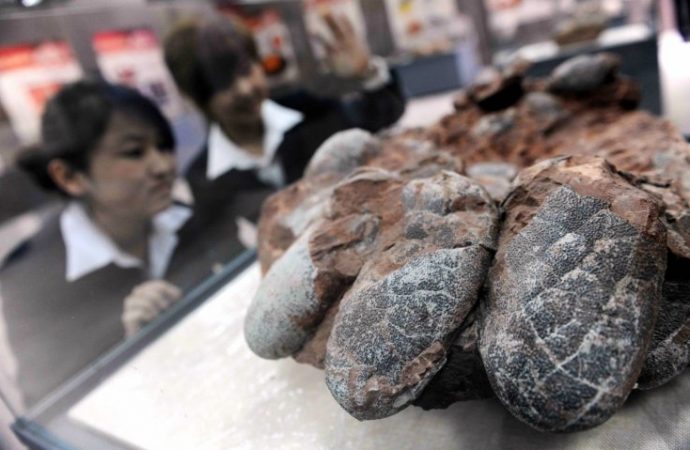The eggs were found by workers who were excavating the ground for the construction of a school in Jiangxi province.
Construction workers in China were shocked to discover that what they thought was a collection of “oval-shaped stones” was in fact a nest of perfectly fossilised dinosaur eggs. The group was using explosives to excavate the ground at a site in the Jiangxi province on Christmas Day when it came across the prehistoric find.
Suspecting them to be dinosaur eggs, they stopped construction in the area and contacted the police. The site was sealed off and experts from the county museum were called in to recover the find.
The fossils have been transported to the Dayu County Museum for further study and identification.
The eggs, 30 in number, date back approximately 130 million years to the Cretaceous period, which lasted from 66 million years to 145 million years ago, People’s Daily Online reported.
The location of the nest, which was being dug up to build a new school, is believed to have once been part of an ancient lakeshore. Palaeontologists suggest that it would have been a great nesting area for dinosaurs.
According to BGR, while experts are yet to confirm what species they belonged to, the shape and size is similar to known examples of oviraptor nests.
The Jiangxi province is particularly famous for its collection of oviraptor fossils. The small, feathered dinosaurs, which are thought to have walked on two legs and had parrot-like beaks, were common in the area that makes up modern-day China.
The discovery follows on the heels of a similar find in the Gobi Dessert. Around 250 ancient eggs laid by pterosaurs, the flying reptiles that lived alongside dinosaurs, were discovered in late November.
Chinese Academy of Sciences paleontologist Xiaolin Wang and his team found between 215 and 300 eggs, some of which still had preserved embryos inside. The area around also featured small skeletons of what is expected to be pterosaur hatchlings.
“We get a lot of hyperbole in palaeontology, but it’s pretty phenomenal,” David Hone, a researcher at Queen Mary, University of London, said of the discovery. “The science is at the absolute start, but the mere raw material is game-changing, potentially.”
Source: International Business Times

































Leave a Comment
You must be logged in to post a comment.